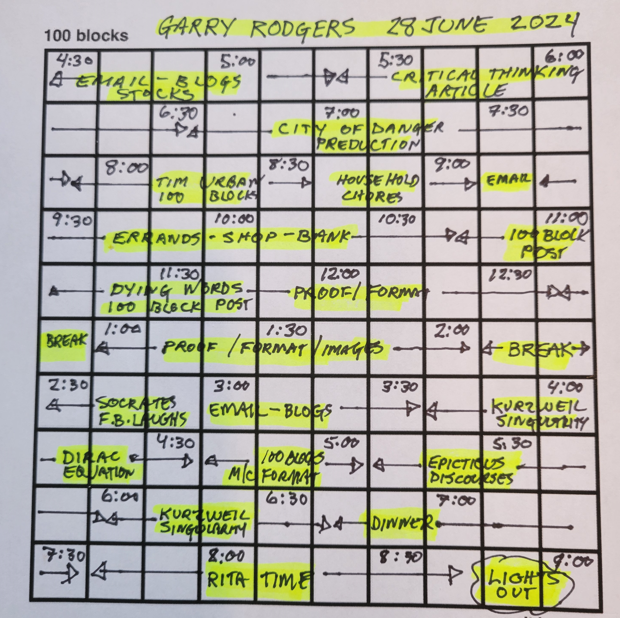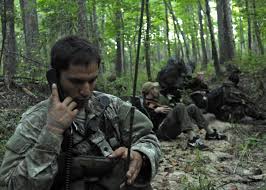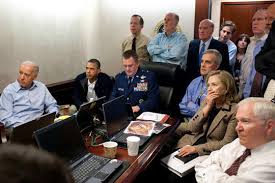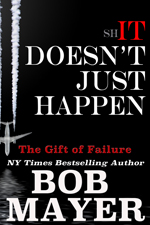 There’s only one area where we humans are truly equal. Time. Each of us are given exactly the same amount of time in our day. 24 hours. 60 minutes. 60 seconds. It’s how we use, track, and manage our time that sets us apart. Think of what you could accomplish with your time, and your energy, if you were able to supercharge your schedule with the game-changing 100 blocks strategy.
There’s only one area where we humans are truly equal. Time. Each of us are given exactly the same amount of time in our day. 24 hours. 60 minutes. 60 seconds. It’s how we use, track, and manage our time that sets us apart. Think of what you could accomplish with your time, and your energy, if you were able to supercharge your schedule with the game-changing 100 blocks strategy.
This strategy of dividing your waking time into 100, 10-minute blocks and tracking it comes from Tim Urban. Tim is a thought leader and prolific writer who hosts the popular website Wait But Why. I’ve followed Tim Urban for years, and I find him a fascinating man. One of his posts was titled 100 Blocks a Day. With credit to Tim for the images and graphs, I’ll paraphrase and personalize the content.
You probably sleep 7 to 8 hours per night. That leaves you with about 1,000 active minutes in your day. If you break that into 10-minute intervals, you isolate 100, 10-minute blocks.
 Click Here or on the Image to Print This Graph
Click Here or on the Image to Print This Graph
Throughout your day, you spend your time progressing through the 100 squares of blocks. When you wake, you’re in the first block and you run out of blocks when you go to bed. By stepping back and looking at what you’ve done in each block, you gain immense clarity from which you can supercharge your schedule.
By time tracking with blocks, we can readily see where we’ve been productive and where we weren’t. We can see time management efficiency, or we can see a complete waste of this priceless resource called time. We can see where to cut back and where to double down.
Ask yourself if each time-block furthered your definite purpose in life and which block was merely enjoyed for its moment. Ask if each block was a time gain or a time suck. Ask if each block allowed you to constantly create, to continue to consume, or to just comfortably cruise.
If you imagine your time blocks laid out on a 10×10 grid, you’d get a total screenshot of your day. How much of it was spent at work, and how much of that work time was productive and necessary? Or unnecessary? How much of your leisure time was worth the lack of effort? How much of your family time and friend time was enjoyed? And what really mattered in your day?
Graphing and tracking time blocks lets you think about everything you spend your time on in context of value per 10-minute block. Preparing dinner might take 3 to 6 blocks. Ordering in takes none. Meditation might take 1 block and a yoga session 3 blocks. Ask what the dollar-per-hour or return-on-investment might be.
2 blocks of reading per evening might add 15 books per year to your mental library. Writing a novel might take 20 blocks per day, and researching/writing/formatting/publishing something like this 675 word post takes 23 blocks or 3.8 hours. I know because I tracked it on the 100-block graph.
As part of this post, I recorded my entire day from the time I awoke to the time I shut down. I’ve always kept a journal and loosely tracked my time, but this was the first crack at being so detailed. Here’s a screenshot of my 10-minute time blocks for June 28, 2024.
I have to say this exercise was enlightening. It made me focus intently as I moved from morning to night. In my writing world, I have a massive project underway called City Of Danger. It’s in its third year of production, and it’ll be a year or two more before release. From this point forward, I’m going to religiously track the City Of Danger production time with the 100 block strategy. I’m curious if I’ve finally found something that can increase my focus and productivity.
Tim Urban of Wait But Why has three more insightful graphs. One is a 90-year period of human life in years. One is a 90-year period of human life in months. The other is a 90-year period of human life in weeks. Feel free to download them and begin plotting your blocks, supercharging your schedule, and changing your game.
















